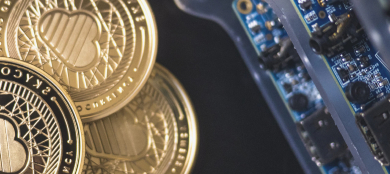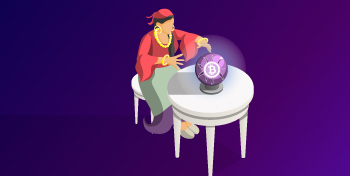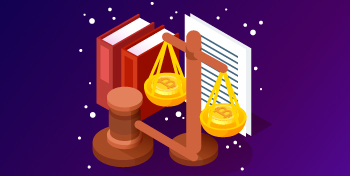Here you are again online. And probably not for the first time today, right? Whether it’s moving money, playing games or sitting on a social network from the phone – a huge part of our life today is on the Internet.
It’s been about 30 years since the Internet first changed the world, and like any new technology, it slowly evolves over time, and includes new features. Blockchain, for example, offers a solution to the control problem, allowing us to decentralize data storage, thereby eliminating the problems of using intermediaries and returning control to us.
But some changes are so profound that they change the whole story, and one of these transformations is happening right now. Are you ready for Web 3.0? It’s time to tell you how to do it.
There is more than one Internet
Let’s just say there is more than one chapter of the Internet: the first was based on freedom of information, and the second on freedom of expression. We’ll come back to that later. The important thing is that the consequences of each new chapter were huge.
The first generation of the Internet was not really called Web 1.0, we gave it this label retroactively, as new versions appeared. At the stage of its inception in the 90s, the Internet was sometimes called the “information web”, and this is a fairly accurate description: it was designed to allow scientists and governments to exchange research results, and, in fact, functioned as a library.
The content was created by a tiny hierarchy of publishers, and the web pages did not support changes, which meant there were no comment sections, communities or personal content.
Although Web 1.0 did not allow us to collaborate or edit web content, it democratized communication and access to information to some extent. Now anyone with an Internet connection could not only get access to research materials for free, but also potentially get in touch with any other person via email.
But, of course, the most significant changes began in 2004. Facebook and YouTube have revolutionized the Internet by strengthening the concept of user-generated content and giving everyone connected to the Internet the opportunity to become the star of their personal publishing platform. A social network was born, which has become even more popular due to the ubiquity of mobile Internet devices.
Now it is difficult to remember the time before the advent of social networks, but their influence simply cannot be overestimated. As individuals, they allowed us to create a digital universe around ourselves, as communities sprang up around the content we posted. By the way, this was the first step in the gradual transition to targeted web content, as more and more often we expected our online experience to be personalized, and advertisers selected their content accordingly.
In general, the latest iteration of the Internet has brought incredible opportunities and a lot of new expectations on our part, which have become the driving force of the Internet as we know it now.
So why change what is already good?
Our current freedom of expression is not truly free. Where third-party platforms have given us a loudspeaker, they equally function as shackles, as our dependence on them gives corporations unprecedented power over our society.
Have you ever thought about how much personal information you disclose online? Social networks are a gold mine of personal information: in fact, your messages and “likes” are already being monetized for advertisers and even political organizations. A recent example of this dynamic was the use of Facebook by Boston Analytics to influence the political landscape.
On a more day-to-day level, central platforms like Uber, Paypal, or Amazon earn an exorbitant share of profits by acting as an intermediary in service operations, leaving very little for the people providing these goods and services. Alternatively, we, the consumers, bear the costs of maintaining the platform. Both of these cases demonstrate the conflict of interest inherent in our current Internet structure.
What about how we manage our money? When you make a deposit, you trust financial institutions not only to keep your data safe, but also to manage your money responsibly and lend it. Think about it — it’s a huge trust! However, the crash of 2008 was a stern warning to all of us that even banks do not always act in good faith.
OK, but what’s the alternative?
Can you imagine that you are your own bank? Or the ability to make online purchases directly from any seller? This is where Web 3.0 comes to the rescue.
If Web 2.0 was defined by social interaction, then the coming era will be associated with digital ownership: you will no longer have to rely on intermediaries when buying goods and services, and the bank will not act as the gatekeeper of your money.
Instead, you will be able to do all this yourself, from a personal blockchain address accessible only to you, on a network that supports direct transactions with any other user of this network.
The driving force behind this evolution is a blockchain network operating on the basis of a decentralized data storage protocol, accessible to anyone with an Internet connection. The massive implementation of this infrastructure has huge consequences for both society and for you as an individual.
According to Coinmarketrate.com, many new dApps (decentralized applications) are already using the possibilities of peer-to-peer interaction to create a new generation of goods and services. Drife, for example, is challenging the Uber paradigm by allowing drivers and passengers to communicate directly rather than through central servers. This eliminates the cost of an intermediary and the need to share your personal data.
What if you could earn on your cryptocurrency savings by lending to a stranger? Compound Dapps demonstrates the amazing potential of peer-to-peer transactions within decentralized finance. Let’s say you have some extra money and you want to act as a lender; here you can deposit tokens into a liquidity pool managed by a smart contract. Then borrowers make loans from this pool, and you, the lender, can track the loan, payments and interest that you receive over time. And all this can be done anonymously.
Maybe art is your hobby? If so, your world will soon look very different: non-interchangeable tokens (NFT), unique digital assets running on the blockchain. Platforms such as Raible, Opensea, DecimalChain or Mintable allow artists and collectors to create, own and monetize assets in the digital ecosystem.
In conclusion
Web 3.0 could be the most exciting thing to happen to our generation. It will allow you to gain new levels of freedom over your finances, data, digital landscape and time. By allowing you to manage your digital assets from a secure location on the blockchain, this new era will take control away from the internet giants, and put it back in your hands.
Are you ready for these great changes? The first step to success is to understand not only their potential benefits, but also the new financial responsibilities they place on you, as well as how you can maximize the benefits of your new ecosystem.


